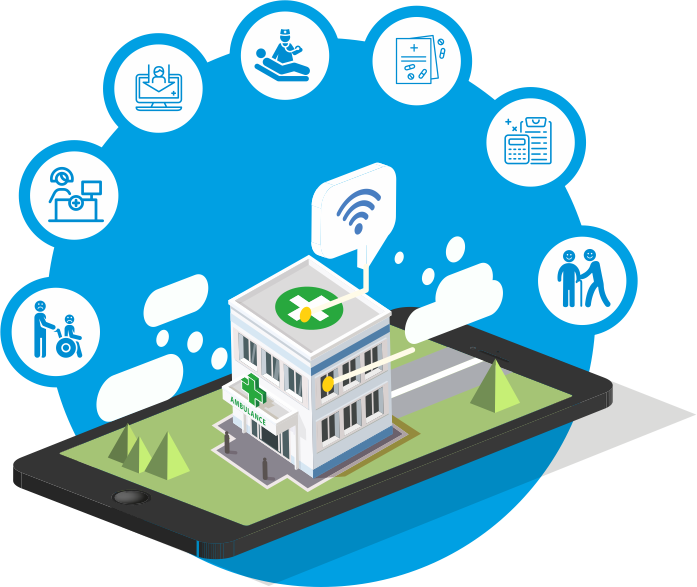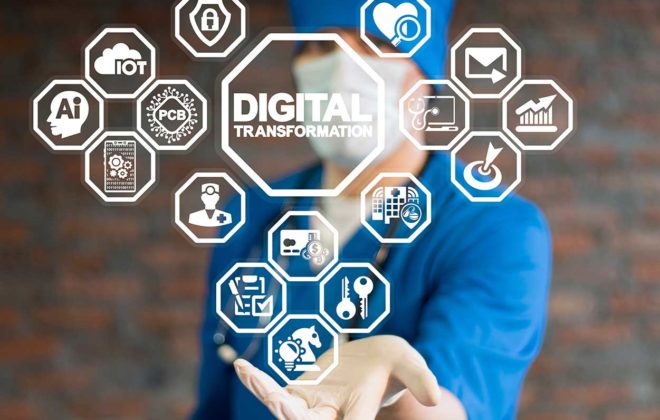How Smart Technologies Can Help Hospitals in Patient Throughput and Capacity Management
Crowded emergency rooms and snaking patient queue, busy personnel always in a rush. Winding corridors and long wait times. A feeling that everything is ready to burst from the seams. An overwhelming sense of being in a space that is running beyond full capacity…where everything seems like it is in organized chaos – does this hospital description sound familiar?
Thanks to smart technologies, growing consumerism and growing economic changes, the hospital of the future will be quite different from the hospital experience of today. The forces of disruption are here and ready to positively impact the efficiency matrix in the hospital environment.
Let’s look at the reality. Patient populations are increasing. Staff shortages are the new normal (as they have always been in this environment). Hospitals are groaning under the pressure to increase their efficiencies and do better resource management. They need ready solutions and technologies to match patient needs to available physical resources in real time. The payback potential of these initiatives is immense.
Yes, smart technologies can have a huge impact on the areas of patient throughput and capacity management. With access to real-time information, hospitals can deliver better care and also make the best use of the available resources at hand and also of their own time.
But since the proof of the pudding is in the eating here’s a look at how smart healthcare technologies are becoming the beacon of efficiency in this high-action environment.
Patient Registrations & Admissions
Isn’t it time to make patient registration and the admission process smarter? In an age that is shifting towards self-service and enablement, this part in the hospital process is still painfully lagging behind. Imagine the time and resources that we would be able to use optimally if we enable patients to register and/or admit themselves to the hospital?
With smart kiosks acting as patient registration systems you can:
- Eliminate paper-based registration that operates in silos
- Assimilate all healthcare information from disparate sources
- Improve patient information flow by ensuring all health-related information is in one place
- Expedite the registration process and manage all other registration and admission-related requirements easily
- Save the time of both the patients and hospital staff
- Improve the hospital experience
Automated Queue Distribution
Most hospitals currently lack the power to clearly communicate across departments. Because they do not have clear visibility into patient flows, capacity positions, and resource demands, (all pre-requisites for optimizing patient care) they have to deal with long wait times. And long wait times are a pain for both the patient and the hospital. With Real-Time Healthcare Systems, the hospital gets access to real-time analytics and insights to determine
- Expected wait times
- Average process turnaround time
- Average number of process delay events
- The average wait times
- The principle reason behind delays and wait times
Using RHTS systems and technologies such as beacons, hospitals can distribute hospital queues according to resource availability. They can also optimally plan OT schedules and ensure that there are no delays caused by poor manual management.
For example, if a patient is being transferred out of the OT, a trigger alert can be sent to the responsible nurses’ unit and housekeeping to process the patient room. These smart technologies can also be used to make sure that Operation Theatre management is done optimally and can help avoid time waste that occurs from double booking.
Automated Lab & Radiology
The hospital laboratory and radiology department can benefit greatly from smart technologies. Firstly, these technologies can help with capacity management and appointment scheduling.
Using beacons, your hospital can easily enable mobile check-ins at your radiology department. Location services using smart technology also help in asset tracking and management. This also helps in reducing wait times in labs and radiology.
Real-time insights and timely alerts intimate if reports are ready and of availability. Lab and radiology reports can also be updated automatically in the EHR ensuring that patient information is complete and updated at all times.
Real-time Workforce Management
Capacity management in a hospital has a direct relationship with workforce management. How can you manage an overcrowded ER if you do not have access to real-time insights into nurse rosters? How can you allocate resources if admission loads are high without this information?
Imagine the kind of efficiency with which a hospital could operate if we used ATC (Air Traffic Control) – like command center to continuously track patient movement and data. With this, hospitals can create ‘flight paths’ to efficiently allocate resources where needed. Real-time insights also assist demand forecasting that helps optimize resource management and consequently capacity management. The benefits:
- Easy performance management
- Reduce unplanned overtime
- Intelligent staff scheduling
What happens when you choose smart technology?
The benefits of using these smart technologies are simple and obvious. They can be highlighted briefly as follows:
- Empowered patients as information exchange are easy and transparent
- Improved processes with process automation to eliminate redundancies and inefficiencies
- Decreased patient waiting times owing to improved process efficiencies
- Automated audits as all information are contained in a central information repository
- Workforce and staff optimization for better patient management and improved patient engagement.
Conclusion
We cannot ignore that capacity management and improving patient throughput are amongst the existing challenges that hospitals face. Unless hospitals focus on capacity management, they cannot improve operational efficiency. This leads to delays, patient dissatisfaction, and the inevitable revenue loss. Can hospitals afford this? No.
We are already witnessing the rise of many inpatient services being pushed to the home or to outpatient ambulatory facilities. However, to really unleash the wave of efficiency across the hospital ecosystem, we need to focus on how to optimize the inpatient and outpatient settings. We need to give patient throughput and capacity management an accelerated boost to redefine care delivery, improve operational efficiencies, and elevate the patient experience.
The time clearly is ripe to change aging infrastructures and processes and use smart technologies to create the hospital of the future. After all, the hospital of the future is not really in the future. It is here, now.




